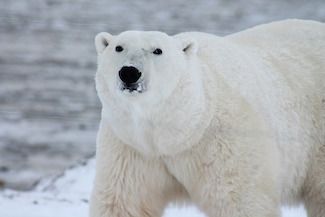Satellites Show Climate Change Impacting Wildlife
Satellite observations have helped scientists better understand how animal habitats are being altered due to the changing climate. This information can also help scientists peek into the future and forecast what animals might do next.
Satellite observations have helped scientists better understand how animal habitats are being altered due to the changing climate. This information can also help scientists peek into the future and forecast what animals might do next.
Satellites are well suited to observe habitat transformation and can aid in showing the impact of climate on the distribution, abundance, and migration of certain animals. So far, researchers have confirmed from satellite imaging that climate change is impacting populations of polar bears, mountain lions, and wild reindeer.

Polar Bears
NASA satellites that have been tracking sea ice changes since 1979 show a major issue for the polar bear population.
Data from 1979 to 2015 reveal that Arctic Sea ice has been shrinking at an average rate of 20,500 square miles per year. This is bad news for polar bears because the species depends on sea ice for hunting, traveling, and breeding.
A study on projections of the global polar bear population published in Biology Letters concluded that there’s a high probability of a 30% decline in the global population of polar bears over the next three to four decades. This would result in the species being classified as vulnerable on the International Union for Conservation of Nature’s (IUCN) Red List.

Mountain Lions
With climate change comes an increase in droughts, especially in the southwestern United States. Many species of herbivores will be impacted by the increase, but mountain lions may see the greatest impact.
By using satellite maps during a severe drought in southwestern United States in 2002, David Stoner, a wildlife ecologist at Utah State University in Logan, recorded 22% and 43% decreases in deer and mountain lion populations, respectively. Because deer are prey for mountain lions, the mountain lion population decline is much more severe.
The loss of these two major game populations will result in the loss of many associated economic benefits they bring through recreational hunting and tourism.

Wild Reindeer
Reindeer populations are declining all over the world. Andrey Petrov, an associate professor at the University of Northern Iowa in Cedar Falls, used satellites to try and understand why.
By examining data going back to 1969, Petrov looked at the Taimyr reindeer herd, the largest wild reindeer herd in the world, in the northernmost region of Russia. According to the data, the migration patterns and distribution have changed as a result of changes in climate. The herd was traveling farther north and higher in elevation to escape the increasing summer temperatures.
Satellite imaging will continue to support efforts to conserve wildlife and protect it from the detrimental effects of climate change.